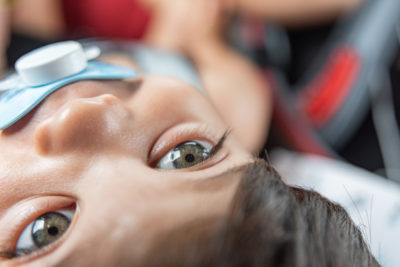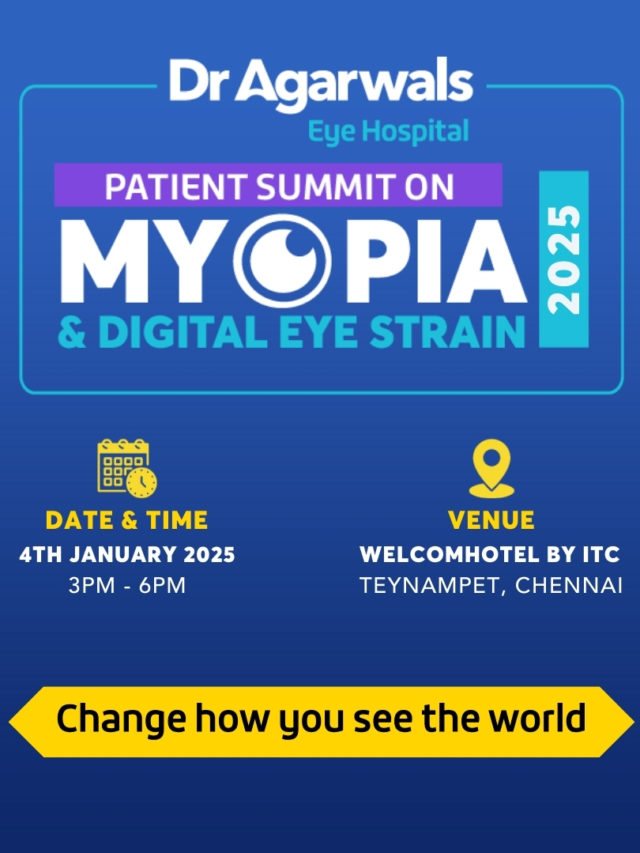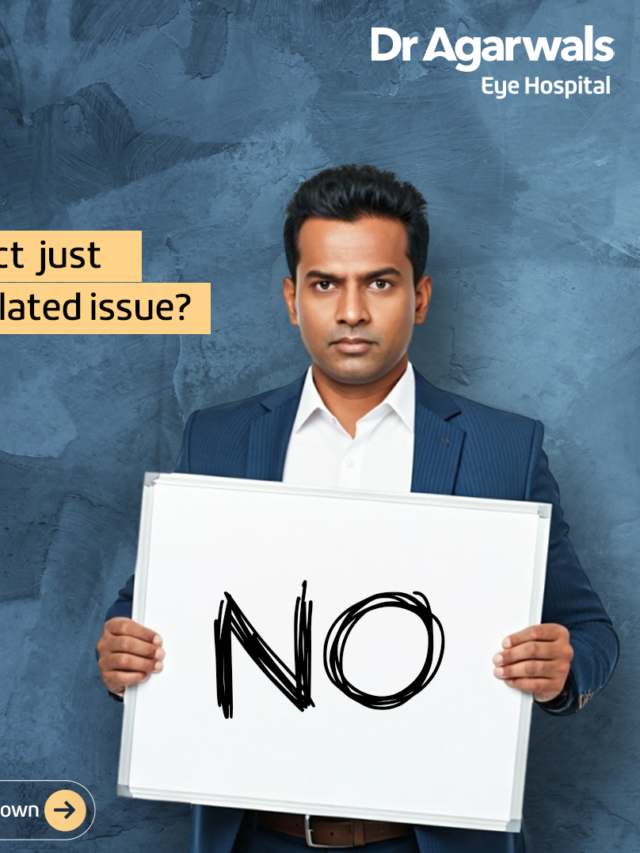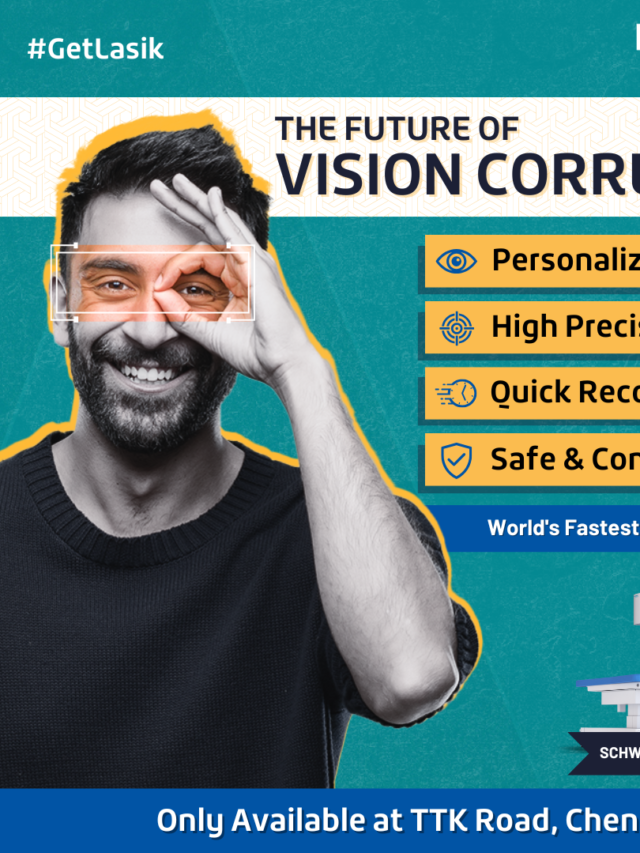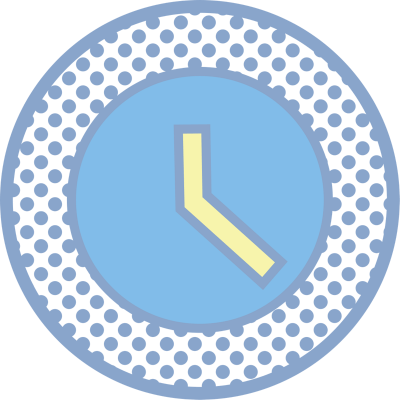Strabismus, commonly referred to as crossed eyes, is a condition where the eyes are misaligned and do not move in coordination. It is typically diagnosed and managed by trained ophthalmologists. One eye may look straight ahead while the other eye may turn inward, outward, upward, or downward. This eye misalignment may lead to visual disturbances such as double vision, blurred vision, and reduced depth perception, as supported by clinical studies on strabismus treatment and outcomes. Based on extensive clinical experience in ophthalmology, this blog outlines the causes, symptoms, and available treatment options for managing crossed eyes (strabismus).
Medically known as strabismus, crossed eyes are a well-recognised and extensively studied condition. It is also commonly referred to as a squint, wandering eye, or mistakenly as lazy eye.
Causes of Crossed Eyes
Crossed eyes may result from various factors, including eye muscle imbalances, nerve-related issues, or underlying medical conditions such as cerebral palsy and Down syndrome. Some common causes of crossed eyes include:
- Muscle imbalances: The muscles that control eye movement may be weaker or stronger in one eye than the other, causing the eyes to become misaligned.
- Nerve problems: If the nerves that control eye movement are damaged or do not work properly, the eyes may become crossed.
- Genetics: Crossed eyes can run in families and be caused by genetic factors.
- Health conditions: Certain health conditions, such as Down syndrome and cerebral palsy, can increase the risk of developing crossed eyes.
- Strabismus may also develop as a result of vision-impairing conditions such as cataracts, diabetes, eye trauma, or tumours affecting the visual pathways.
- In some children with uncorrected farsightedness, the effort to focus can lead to accommodative esotropia a well-documented and common type of strabismus in paediatric ophthalmology. This happens because of the excessive focusing effort.
Risk factors for strabismus
Strabismus, or misalignment of the eyes, can arise from a variety of underlying causes. While some cases are congenital, others develop later due to structural, neurological, or systemic issues. Identifying risk factors is essential for early detection and intervention, particularly in children, where timely treatment can significantly improve outcomes.
Symptoms of Crossed Eyes
The most obvious symptom of crossed eyes or strabismus is the misalignment of the eyes, but there are other symptoms to look out for, including:
-
Poor Vision in One Eye
When one eye has significantly reduced visual clarity, often due to refractive errors, amblyopia (lazy eye), or congenital cataract,s it may fail to align properly with the other. The brain may start to rely more heavily on the stronger eye, weakening the coordination between the eyes. This imbalance can increase the risk of strabismus, especially if left uncorrected during early development.
-
Cerebral Palsy
Cerebral palsy affects muscle control and coordination, including the muscles that govern eye movement. Children with cerebral palsy have a significantly higher risk of developing strabismus due to abnormal neuromuscular control. This form of strabismus may involve one or both eyes and often requires a combination of optical correction and surgical management.
-
Down Syndrome
Children with Down syndrome frequently experience a range of visual challenges, including refractive errors and accommodation issues. The muscle tone and neurological factors associated with Down syndrome also contribute to an increased prevalence of strabismus. Regular ophthalmic evaluations are essential in this population to monitor eye alignment and visual development.
-
Brain Tumours
Brain tumours, particularly those affecting areas responsible for eye movement, such as the brainstem or cranial nerves, can disrupt the signals that coordinate eye positioning. Strabismus may be one of the early presenting symptoms, especially if it appears suddenly in older children or adults. Prompt neurological and ophthalmic evaluation is crucial in such cases.
-
Neurological Problems
Various neurological disorders, including stroke, multiple sclerosis, and congenital brain malformations, can impair the control of eye muscles. Damage to the cranial nerves (especially the third, fourth, or sixth nerves) responsible for extraocular muscle movement can lead to paralytic strabismus. These cases often require a multidisciplinary approach involving both neurology and ophthalmology.
Eye Tests available for Crossed Eyes
There are several treatment options available for crossed eyes, depending on the cause and severity of the condition. These include:
Apart from the standard ophthalmic examination, there are multiple eye tests for squint eye like:
- A retinal examination is one of the most common tests for squint.
- Visual Acuity testing
- Corneal light reflex
- Cover/ Uncover Test
- Brain and Nervous System testing
Treatments available for crossed eyes
Amblyopia or lazy eye needs to be treated first. This is done by patching the good eye so that the weaker eye gets trained to work harder.
If the strabismus do not get corrected, eye muscle surgery is indicated. Different muscles of the eye are made stronger or weaker.
Adults with a mild, intermittent squint may respond well to prescribed eye exercises and corrective lenses, particularly when the condition is identified and addressed at an early stage.
Botox: Botox or Botulinum Toxin stops muscles from working and can be injected directly into eye muscles for certain types of squints.
Preventing Crossed Eyes
Early detection is very important. All children should get their vision checked between the ages of 3 months to 3. Years. If you have a family history of strabismus or amblyopia, you should get your child’s eyesight checked even before the age of 3 months.
While some cases of crossed eyes cannot be prevented, there are steps that can be taken to reduce the risk of developing the condition. These include:
- Getting regular eye exams: Regular eye exams can help detect and treat vision problems early on.
- Treating underlying health conditions: Managing health conditions such as diabetes, hypertension, and other conditions that can affect vision can help reduce the risk of crossed eyes.
- Protecting the eyes: Wearing protective eyewear when playing sports or doing other activities that could lead to eye injuries can help prevent damage that could lead to crossed eyes.
In conclusion, crossed eyes can cause a range of vision problems, but with early detection and treatment, many people can experience improved vision and alignment. If you or someone you know shows signs of crossed eyes, consulting a qualified and experienced ophthalmologist is important for accurate diagnosis and appropriate treatment. With timely intervention and appropriate treatment, including vision therapy or surgery, research indicates that most children with crossed eyes can achieve proper eye alignment and significantly improved visual outcomes.
Accommodative esotropia
In children, strabismus may develop due to muscle imbalances, neurological disorders, or associated conditions such as cerebral palsy and uncorrected refractive errors, as supported by evidence from paediatric ophthalmology research.
If you suspect your child has crossed eyes, it is important to consult with an eye doctor or pediatrician. They can perform an exam to determine the cause and severity of the condition, as well as recommend appropriate treatment options.
Treatment options for crossed eyes in children
Eyeglasses: Corrective lenses can help to realign the eyes and improve vision.
Eye exercises: These exercises can help to strengthen the eye muscles and improve coordination between the eyes.
Patching: Covering the stronger eye with a patch can help to strengthen the weaker eye and improve alignment.
Surgery: In more severe cases, surgery may be necessary to correct the misalignment of the eyes.
Early treatment of crossed eyes in children is essential to prevent long-term complications such as impaired depth perception, reduced visual function, and potential effects on self-confidence. With appropriate treatment, most children with crossed eyes can achieve normal eye alignment and vision.

